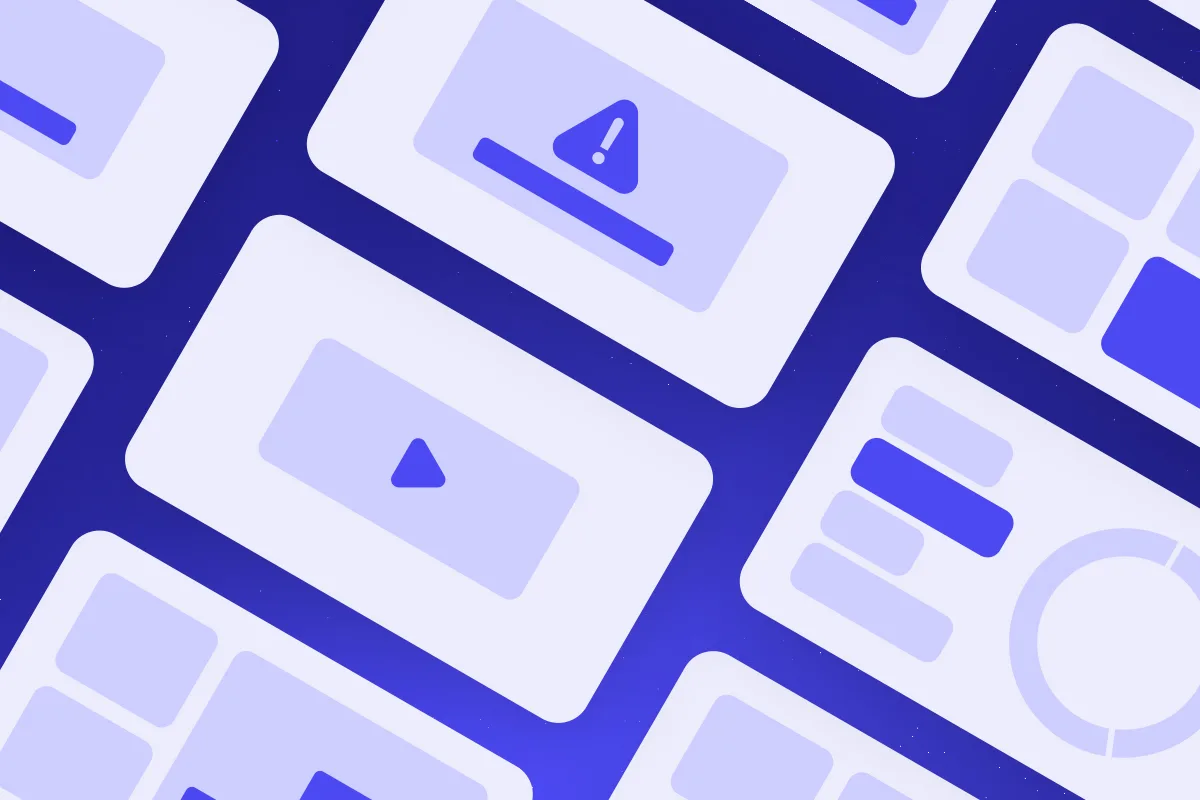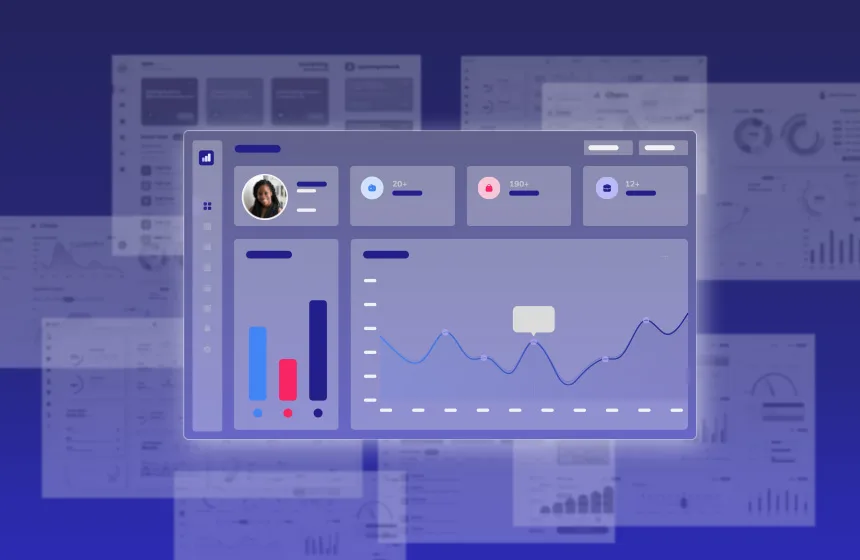Accelerate deals and increase win rates with the leading enterprise AI demo platform.
Software Demo Best Practices: What Top Teams Do Differently

October 21, 2025
Table of Contents
In software sales, the demo is the deal. It’s the moment a prospect decides if your product is a real solution or just more shelfware. Get it right, and you’re on your way to a closed-won deal. Get it wrong, and the opportunity stalls out, taking your forecast with it. So, how do you make sure your team’s demos actually sell? This guide breaks down what top-performing teams do differently, using proprietary data from our 2025 Sales Demo Effectiveness Survey of over 350 sales pros.
Why demos fail (and what it costs you)
You spend a fortune on marketing to generate pipeline. Your reps work hard to get prospects on the phone. Then comes the demo — the single most critical moment in the sales cycle — and it falls flat. A glitchy environment, a rambling presentation, a failure to connect the product to the prospect’s pain. We’ve all seen it happen. Our research shows that a shocking 81% of sales reps have lost a deal because of a bad demo.
The cost is brutal. It’s not just one lost deal. It’s a higher customer acquisition cost, longer sales cycles, and inaccurate forecasting. It’s burning out your most expensive resources — your Solutions Engineers — on demos that were doomed from the start. Demos are often the most overlooked part of a sales strategy, but they make or break your pipeline.
7 software demo best practices backed by data
So, what separates the demos that win from the ones that tank your quarter? It’s not about having the flashiest features. It’s about a disciplined, repeatable process. Here are the practices that set the best GTM teams apart, all backed by data.
1. Deliver demos from a rock-solid environment
It all starts here. If your demo environment breaks, the deal is at risk. Period. We’ve all felt that stomach-drop moment when a live production or staging environment glitches, freezes, or just plain refuses to load during a call. It kills your rep’s credibility and makes your product look unreliable.
Top teams refuse to take that risk. They run their demos in dedicated, bulletproof environments built for one purpose: selling. According to our survey, 66% of sales pros say that “story-driven data” and realism are the top traits of a great demo environment. Buyers have a sharp eye for nonsensical placeholder data. They need to see a world that looks like theirs. Modern demo platforms let you create stable, cloned environments and use AI to populate them with clean, relevant data. This lets your team demo with complete confidence.
2. Don’t demo on the first call
Your team is excited about the product. They want to show it off. But demoing on the first call is a costly mistake that wastes your best resources on unqualified opportunities. You wouldn’t have your top SE build a custom POC for a prospect you’ve only spoken to for 15 minutes, and the same logic applies here. The first call is for discovery, not a presentation.
The data is clear: 62% of sellers believe demoing should happen on the second call, after discovery is complete. Use that first conversation to listen. Dig into their pain points, understand their goals, and qualify the opportunity. Only then can your team build and deliver a tailored demo that actually solves a problem instead of just showing off features.
3. Focus on personalization
Generic demos get generic responses. If a buyer can’t see their own business reflected in your product, they’ll tune out. Personalization is what makes the value of your product click. This doesn’t mean your SEs should spend days building a new demo from scratch for every call. That isn’t scalable.
The goal is to balance impact with effort. Winning teams build a library of reusable demo templates for key verticals and use cases. From there, reps can apply light-touch personalization—swapping in the prospect’s logo, using their company name, and tweaking data to match their industry. This has become standard operating procedure, with 85% of reps personalizing demo data. A modern demo platform makes this easy, allowing you to clone a master demo and customize it in minutes.
4. Keep it engaging and conversational
Stop the monologue. If your rep is talking for more than two minutes without asking a question, they’ve already lost the room. A demo is not a lecture; it’s a guided conversation. The goal is to build a back-and-forth dialogue, not force-feed a presentation.
This is exactly what buyers want. Our survey found that a massive 79% of buyers prefer a live walkthrough over slide decks or pre-recorded videos. They want to interact, ask questions, and guide the conversation toward what matters most to them. Coach your team to build in pauses. Ask questions like, “How are you handling this today?” or “Does this look like it would solve the problem we talked about?” to turn a passive viewing into an active workshop.
5. Tell a compelling story
Nobody buys features. They buy a better version of their future. The best demos aren’t a tour of the user interface. They are stories. Every good sales story has a simple structure: the “before” and the “after.”
Start by anchoring the demo in the prospect’s current pain — the broken workflow, the missed revenue, the manual process they hate. That’s the “before.” Then, introduce your product as the solution and walk through 2-3 critical workflows that solve that specific pain. Always connect features to value. Don’t show what a button does; show what it accomplishes for them. The end of the story is the “after” — the efficient, data-driven, and less stressful world your product enables.
6. Prepare for the unexpected
Demos break. Wi-Fi drops. A key stakeholder throws a curveball question. It happens. The difference between top performers and everyone else is that they have a plan for it. Hoping for the best is not a strategy.
A solid backup plan is non-negotiable. This could be as simple as having an interactive product tour or a pre-recorded video of the key workflow ready to go. If the live demo environment fails, you don’t have to kill the momentum and reschedule. It also means preparing for tough questions. Your reps should anticipate objections and technical queries and have crisp, confident answers ready. This preparation signals to the buyer that your team is professional and can be trusted.
7. Follow up strategically
The deal isn’t won when the Zoom call ends. Your real job is to arm your champion for the internal battles they need to fight on your behalf. A generic “Thanks for your time” email won’t cut it. Your follow-up is their arsenal.
A strategic follow-up email recaps the specific value propositions that resonated with the buyer. More importantly, it includes an asset that lets them re-live the best moments of the demo and share it with their team. An interactive, personalized demo leave-behind is perfect for this. It allows stakeholders who weren’t on the call to explore the product for themselves, ensuring the conversation continues and your deal builds momentum. For more on this, see our breakdown of the best interactive demo software.
Bonus tips from high-performing teams
The top 1% of sales organizations add extra layers of rigor to their demo process.
- They run post-mortems on lost deals. When an opportunity dies, they dig in to find out why. Was it a demo failure? Did they miss a key pain point? This feedback loop helps them spot patterns and fix underlying issues in their sales motion.
- They constantly refresh their demo environments. Your product is always evolving, and your demo should too. Top teams have a set schedule (usually monthly) to update their master demo templates with the latest features and UI changes. This prevents that awkward moment when a prospect asks about a feature that’s not in the demo.
- They enable AEs to handle early-stage demos. Solutions Engineers are one of your most valuable — and expensive — resources. Leading organizations empower their AEs with stable, easy-to-use interactive demos for qualification and overview calls. This frees up SEs to focus their deep expertise on highly qualified, high-stakes opportunities later in the sales cycle. Our complete guide to SaaS demos explores this model further.
Quick software demo best practices checklist
Use this checklist to review your team’s demo process.
- Is your demo environment reliable and personalized?
- Are you waiting until after discovery to demo?
- Is your demo a two-way conversation, not a monologue?
- Are you connecting features to the buyer’s specific pain points?
- Do you have fallback plans for technical issues?
- Does your follow-up arm your champion to sell for you internally?
The bottom line
You can’t afford to leave your most critical sales motion to chance. The gap between an average demo and a great one is the gap between hitting and missing your number. Winning demos are the result of a deliberate strategy built on a reliable environment, deep personalization, and a compelling, conversational story.
Reprise gives your team a bulletproof platform to execute this strategy flawlessly. We make it easy to build high-impact, interactive demos that showcase exactly what your buyers care about — without the prep chaos, exorbitant cloud hosting costs, or technical risk. Our AI-powered platform helps you create stable, easily personalized demo environments so your team can stop firefighting and start selling. See how you can implement these best practices with our live demo solutions.
FAQs
What makes a great demo environment?
A great demo environment is stable, fast, and secure, removing any risk of technical failure during a live call. It needs to be filled with realistic, story-driven data that reflects the prospect’s world. Finally, it has to be easy for a non-technical person to customize and maintain.
How do I personalize demos without burning time?
The most efficient way is to use a demo creation platform that supports reusable templates. Your team can build a master demo for a specific use case, then quickly clone and customize it with the prospect’s branding and data in a few minutes. This delivers a personalized experience without burning out your SEs.
What’s the biggest cause of failed demos?
The biggest cause is a failure to connect the product to the prospect’s specific pain points. This often stems from a lack of preparation — either by skipping the discovery process, using an unreliable demo environment, or delivering a generic, feature-focused monologue instead of a tailored conversation.






